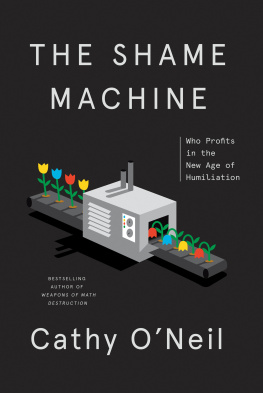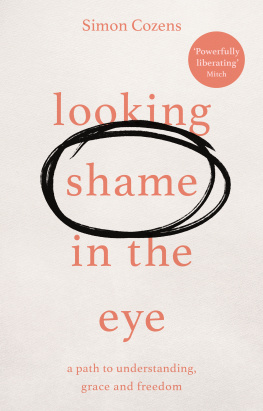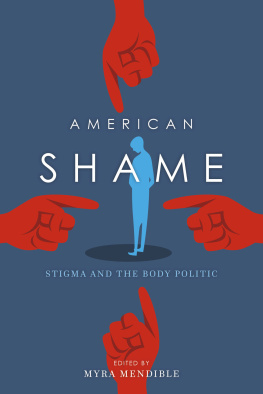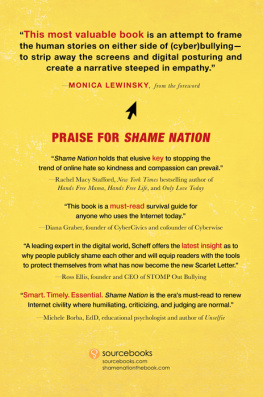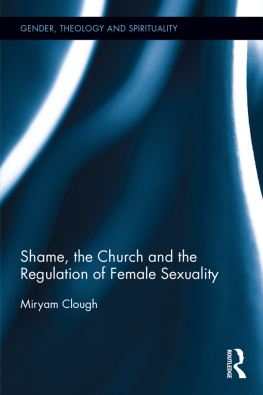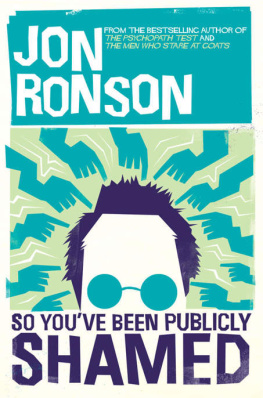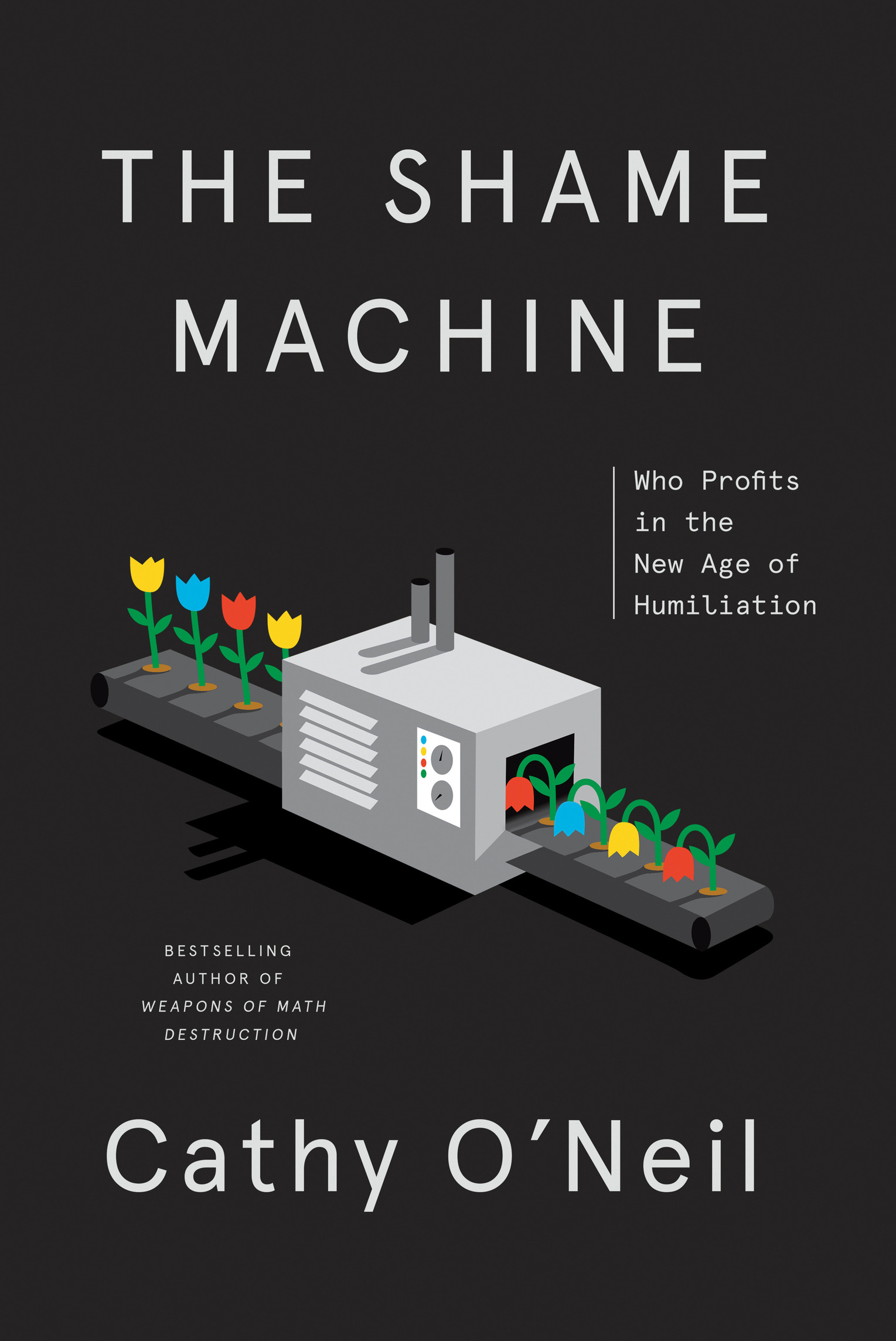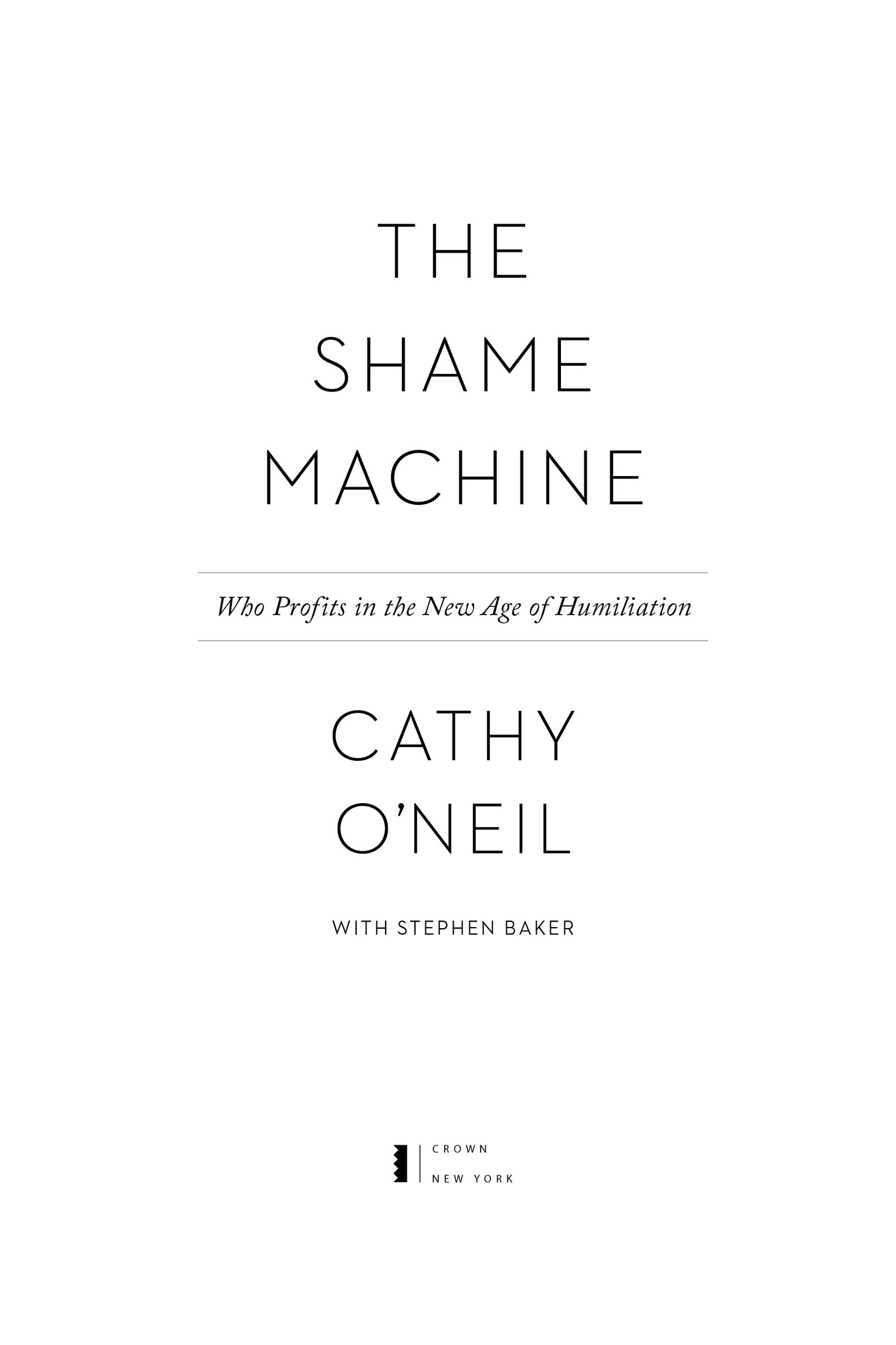All rights reserved.
Published in the United States by Crown, an imprint of Random House, a division of Penguin Random House LLC, New York.
Crown and the Crown colophon are registered trademarks of Penguin Random House LLC.
Names: ONeil, Cathy, author.
Title: The shame machine / Cathy ONeil.
Description: First edition. | New York: Crown, [2022] | Includes bibliographical references and index.
Identifiers: LCCN 2021052960 (print) | LCCN 2021052961 (ebook) | ISBN 9781984825452 (hardcover) | ISBN 9780593443385 | ISBN 9781984825469 (ebook)
Subjects: LCSH: ShameSocial aspectsUnited States. | BlameSocial aspectsUnited States. | Social problemsUnited States.
INTRODUCTION
TELL FRIENDS THAT youre researching a book about shame, and youll hear the saddest stories. This has been my life for the last few years. Ive heard about every shade and flavor of it: zit shame, sex shame, math shamedark memories dredged up from the high school locker room, humiliations at the hands of camp counselors, doctors, star quarterbacks. They flow together in my mind, into an enormous, communal underground pool of dread and pain, much of it brutal. Its hard to look at and even harder to make sense of.
But one evening, when the subject of shame came up, a friend of mine whos an art history professor offered something entirely new. Have you heard of the Pueblo clown society? she asked. I hadnt. And so she told me about a shaming ritual in the Pueblo nations in New Mexico and Arizona. In one case she described, clowns bodies are painted with black and white stripes made from clay. Their hair, parted in the center, is bound in two bunches, which stand upright on each side of the head and are also encased in clay. The headpieces are trimmed with corn husks.
These rituals have many layers of meaning, she explained. Theyre tied to religion, and its such a sensitive subject that participants are discouraged from discussing it with outsiders.
I followed up with Peter Whiteley. Hes the curator of North American Ethnology at the American Museum of Natural History in New York, and much of his anthropological research has focused on the traditions of the Hopi. This tribe has lived in northeastern Arizona for a millennium in fixed settlements, which is why the Spaniards, when they arrived in the sixteenth century, included the Hopi as one of the peoples they called Pueblo, the Spanish word for town.
The function of the shame clowns, Whiteley says, is to reinforce the norms and ethical standards of the community. In seasonal ceremonies, which extend over two days, the clowns dressed in clay-striped costumes perform in a plaza surrounded by community members. The premise is that they are children of the sun who come into the ceremony with no knowledge of society or human morality. In some of their early skits, they seem depraved, shattering the rules of decency and decorum. They eat filth from the ground, steal from one another, simulate sex. Since they dont know the rules, anything goes. But over the following day and a half, their understanding advances, and they seem to acquire the basics of ethical behavior. In short, they are taught to be more Hopi.
In the process, they teach people about whats acceptable, what isnt. They are the great commentators of the world, says Whiteley. Theyll call out transgressive behavior. And for this they employ shame.
In one ceremony Whiteley recalls from the 1990s, the clowns acted like comical drunks, staggering and throwing bottles around as they ridiculed a bootlegger, a man known as Cricket, who was selling liquor within the community, which violated an established rule. The alcohol he supplied was a poison developed by outsiders, and it endangered the health of the tribe. The shaming Cricket received was intense, Whiteley says. He must have had pretty thick skin. It sent a sharp message not only to him but to the entire group. Someone thinking about bootlegging would now think twice.
The clowns shaming of community members doesnt end with the laughs and jibes. Later in the ceremony, both the clowns and their shamed targets can receive formal forgiveness. With that, the shamed return to the tribe in good standingthough always aware that the others will be keeping an eye on them.
A day or two of ridicule and then redemption. This was pretty tame stuff compared to the dark and painful stories Id been hearing about. And next to my own lifelong battle with fat shame, it seemed like coaxing rather than bullying. The Hopi ceremony, as Whiteley described it, doesnt tell the transgressors that theyre bad people, or losers, only that they need to make a course correction.
How the Pueblo clowns taunt their targets tells us something about the role of shame in society. It can be healthy, even kind (once you get past its sharp edges). To understand whats so healthy about it, lets take a look at an altogether different variety.
Ever heard of bingo wings? The term comes from Britain, where bingo is an after-dinner staple in retirement homes. When a woman wins, shell shout BINGO! Raising her winning card high, she typically waves it eagerlyand this is where the scrutiny begins. Her movements draw attention to her arm, especially the upper part of it, where in many cases a jiggling pocket of loose fatty skin sways back and forth. That is a bingo wing in action. To the judgmental mind, it represents ugliness, which generates shame. Its also associated with another powerful source of shame, old age, and linked with women, who suffer far more body and age shame than men. Plenty of class shame also oozes to the surface. Rich people, after all, rarely play bingo, an activity popular with the middle and lower classesfolks so thrilled to win a prize that they wave their arms madly, exposing their bingo wings.
The cosmetic enhancement industries thrive on body shame. In their messaging, they make it all too clear that bingo wings, also known as bat wings, are gross, something people should hide with long sleeves until they can excise them with surgery. This viewpoint, which feeds their business, is echoed throughout society, from morning TV shows and infomercials to grooming websites. It is so pervasive that many of us take it as gospel. Unless you fly around at night catching insects, says Blue Hare, a lifestyle magazine for older women, no one needs or wants bat wings. So what causes them and what can you do about themrealistically? The answer is to eliminate these unsightly appendages. The cost for the surgery, known as an arm lift, or brachioplasty, averages about $5,000 per arm.
As I see it, the Hopi ceremony and bingo wings illustrate two contrasting faces of shame. The Hopi shame clowns send signals to members of their community, using gentle ribbing to enforce cultural norms. In the case of Cricket, the alleged bootlegger, theyre saying, Dont poison us. Stay true to the enduring values of our tribe.

